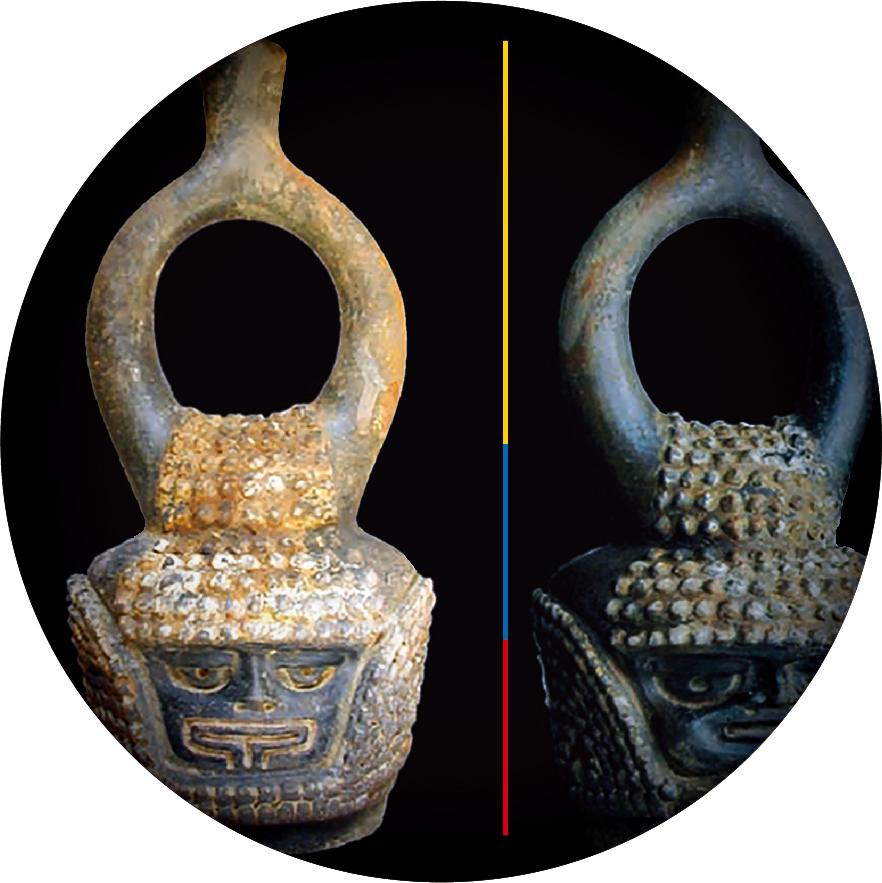Special Presentation “Encountering the Food of the Gods”
2024.04.17-
COLONNADE2
A human-faced stirrup bottle containing cacao starch was discovered at the Santa Ana-La Florida site in the southeastern tropical rainforest region of Ecuador. Traces of cacao utilization dating back approximately 5,300 years have been found at this site, drawing attention as a potential indication of the world’s oldest consumption of cacao.
In commemoration of the donation of ancient pottery replica from the Embassy of Ecuador in Japan to the University Museum, the University of Tokyo (UMUT), we carry out a special presentation.
The scientific name of Cacao is Theobroma cacao, the genus name means God’s food in Latin. While Mesoamerica has been considered the oldest area of cacao use, the discovery at the Santa Ana La Florida site suggests the possibility of cacao being utilized and cultivated in the Amazon region even earlier.
The bottle donated on this occasion has a unique characteristic with different facial expressions on each side. The protrusions around the faces are considered to represent Spondylus shells found off the coast of Ecuador. Spondylus shells were highly valued in the rituals and ceremonies of Andean civilizations. The discovery of traces of cacao beverages in the bottle resembling Spondylus shells, a product of the coastal region, suggests that the inhabitants of this site had close interactions with both the Andean and Amazon regions.
The Santa Ana La Florida site has yielded numerous artifacts crucial for understanding the lives of ancient peoples, including ornaments made of turquoise and amazonite, as well as intricate stone containers.
Organizer: The University Museum, the University of Tokyo (UMUT)
主 催: 東京大学総合研究博物館
協 賛: ファーマライズホールディングス株式会社、株式会社商船三井、一般財団法人日本海事協会、一般財団法人山縣記念財団
企画協力: 東京大学海事デジタルエンジニアリング講座(MODE)
後援: 東京大学 海洋アライアンス、日本航海学会、日本船舶海洋工学会
-----------
関連イベント
【上映会】
URL
【講演会】
URL

